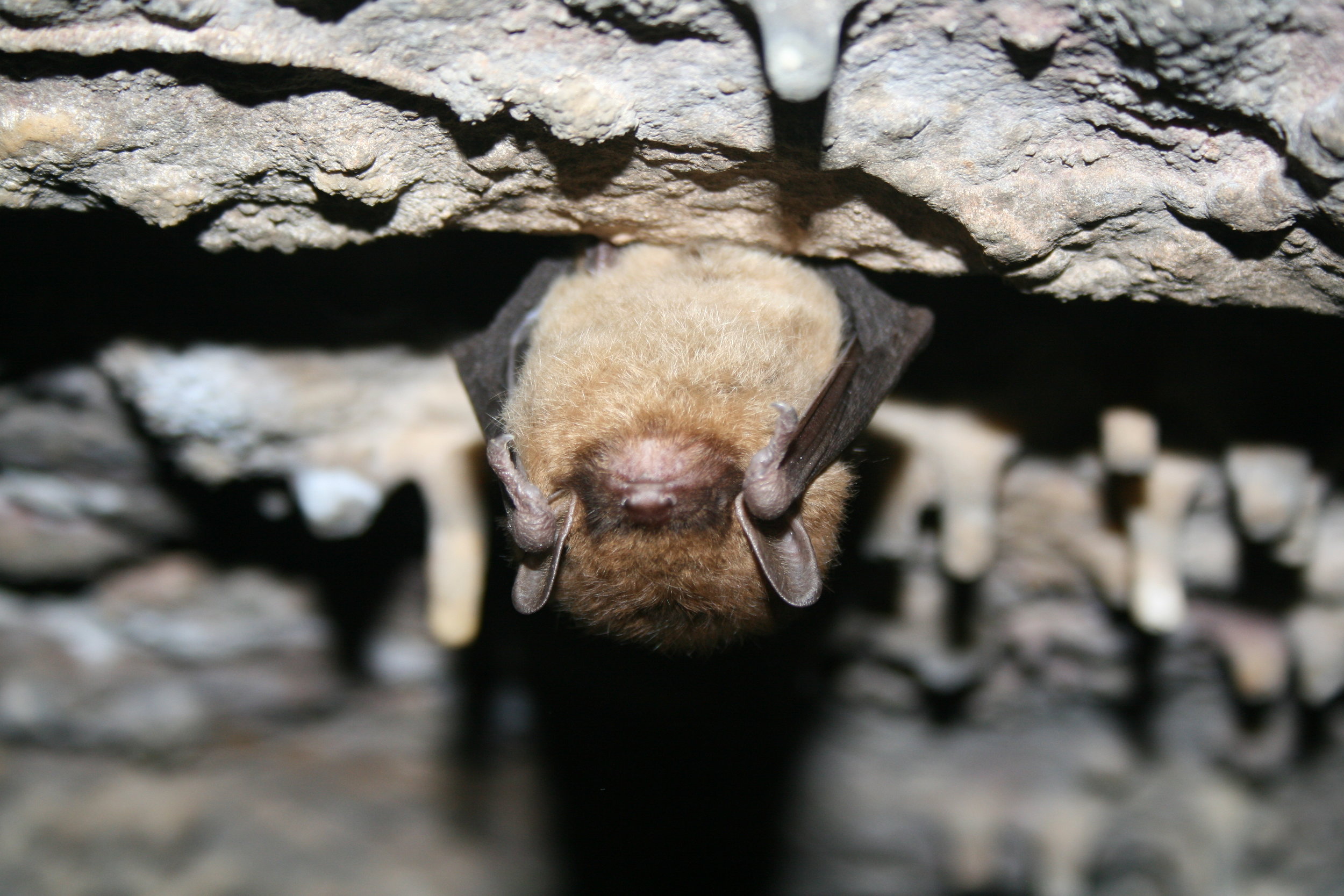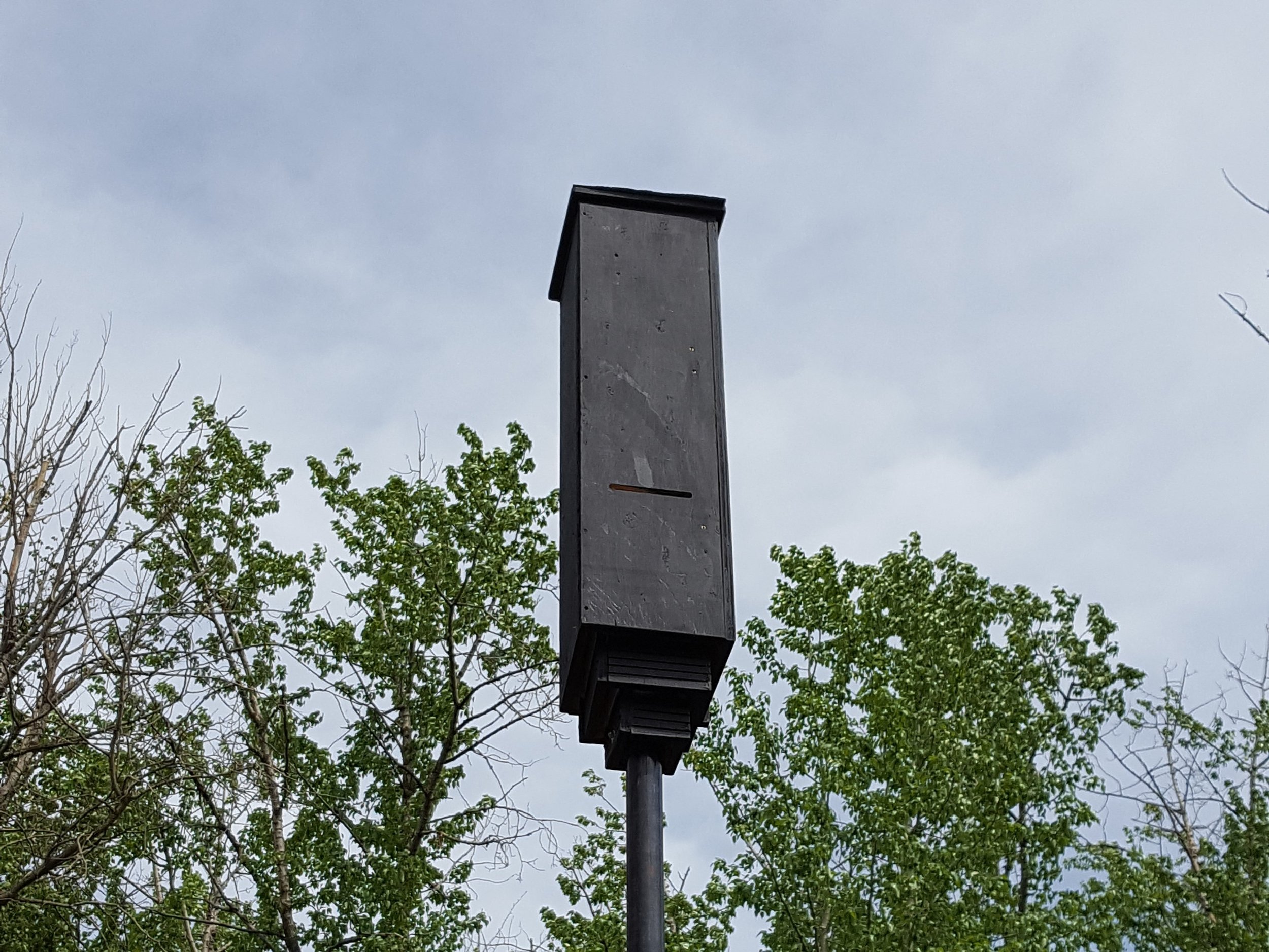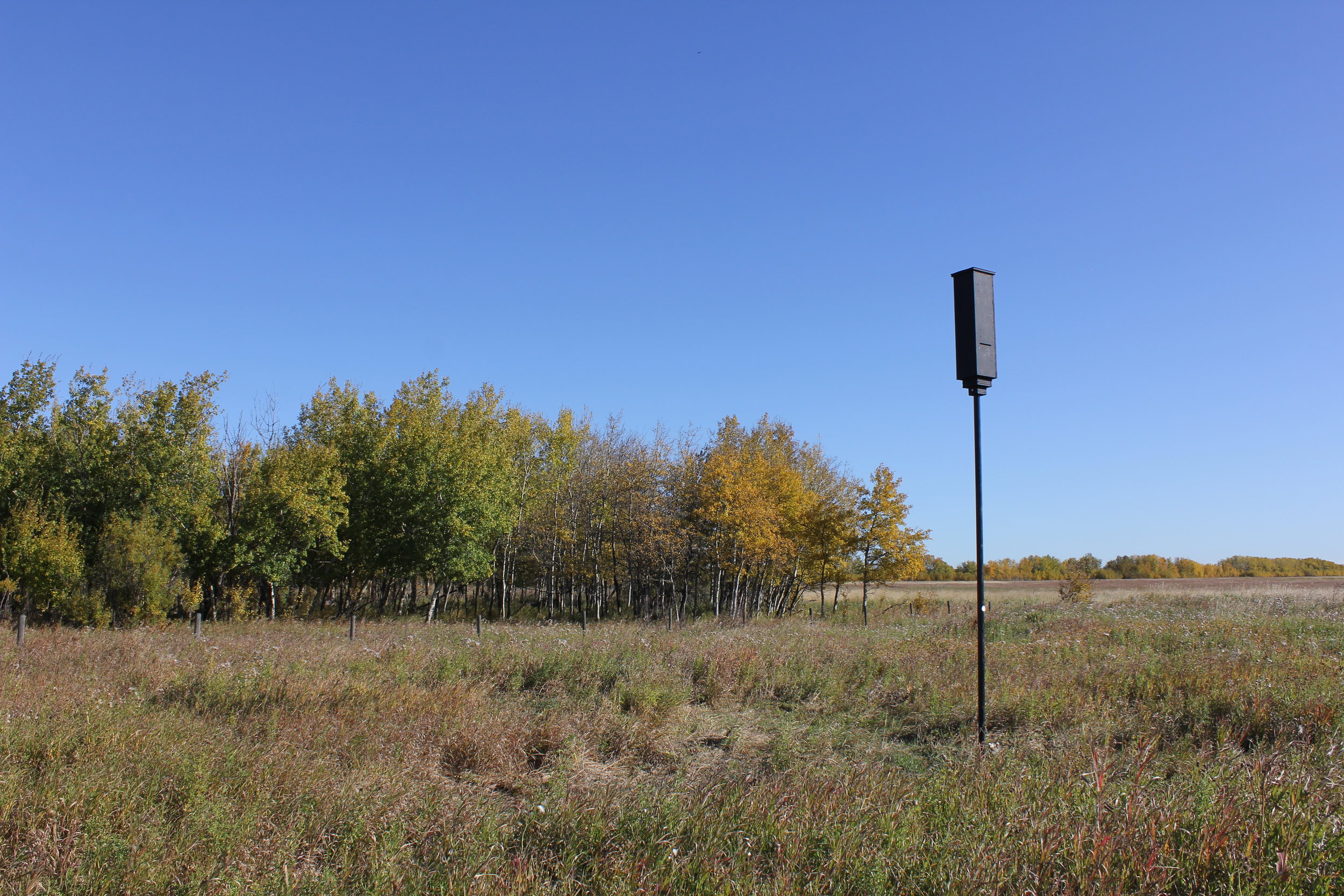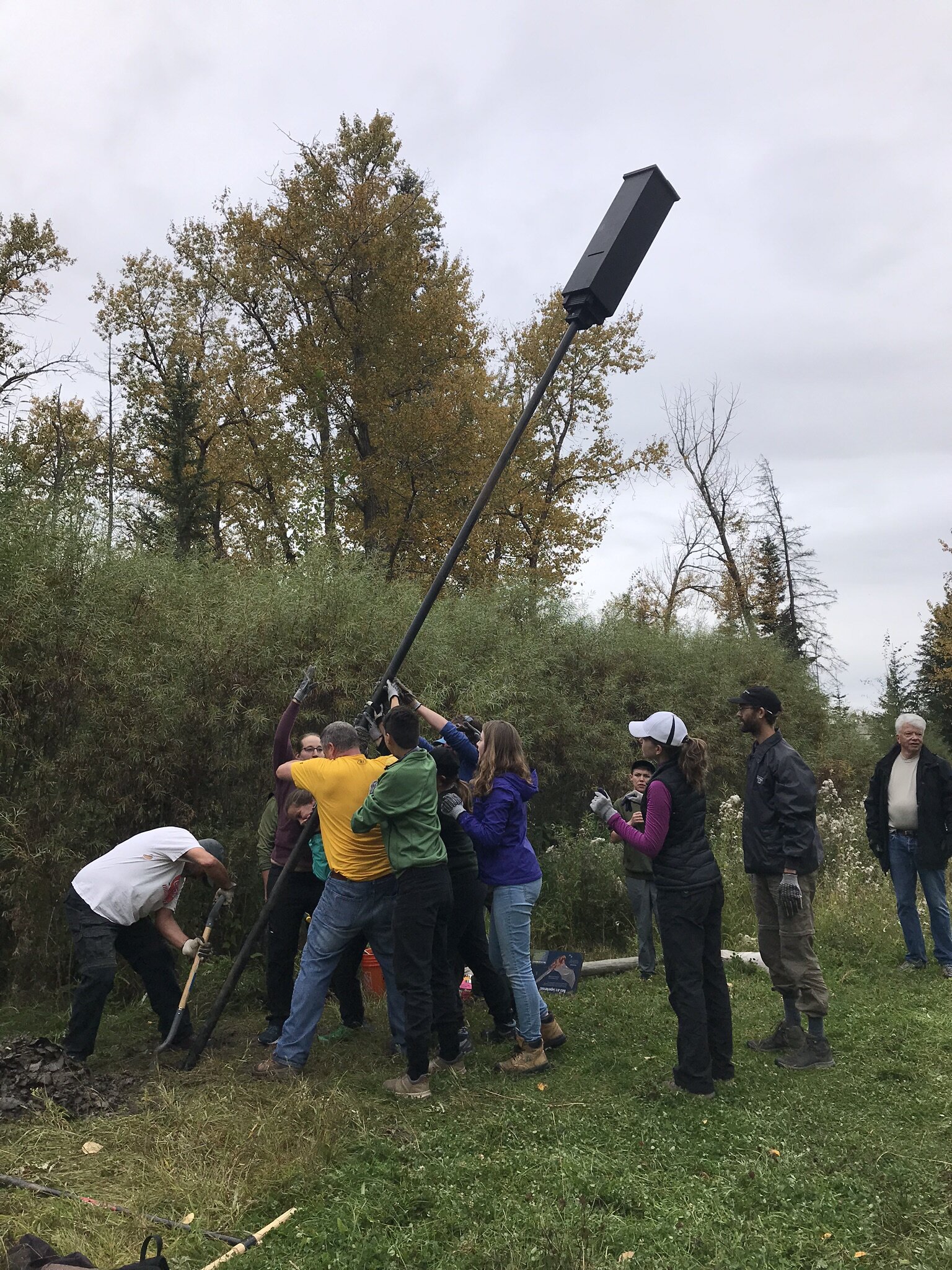Bats are an important part of our local ecosystems. They help to manage insect populations, particularly those pesky mosquitoes.
The loss of many natural areas has resulted in fewer available roosting spots for many species of bats. Fortunately, some bat species will also roost in wood boxes, or other types of artificial structures. Bat boxes are simple to make and are a practical way to contribute to wildlife conservation, even in your own backyard.






Photos: Ann Froschauer, Gerald Romanchuk, EALT
EALT places several types of bat boxes on our conservation lands, to provide homes for the many species of bats living in Alberta. With the help of our amazing volunteers, there are bat boxes installed at 6 of our conservation lands! Read this article about our bat box project written by Suncor.
Why Should We Help Bats?
Little brown bats are federally listed as Endangered.
Little brown bats and northern myotis are now listed as Endangered in Alberta.
A little brown bat will consume 600 to 1,000 mosquitoes, or mosquito-sized bugs, per hour, and eat more than half of their own body weight in insects each night!
A feasting colony of bats helps manage insect populations. Bats eat insects that are considered pests who transmit disease, destroy crops and impact forest stands.
Bats provide scientists with a model to study echolocation.
White-nose Syndrome has seriously harmed bat populations in parts of Canada.It is a fungus that grows on the nose and mouth of the bat and other areas of the body during hibernation. The fungus irritates the bat and wakes it up; in search of food, the bat either dies of starvation or exposure to the cold elements.
The fungus that causes White-nose Syndrome was detected in Alberta in 2022.
Read more about the Little Brown Bat here!
Bats Roosting in Buildings
Sometimes bats roost in our buildings. If you happen along bat pups please remember they cannot fly and they still rely on their mothers. Bats reproduce very slowly for their size, and populations are slow to recover once lost. Click here for info on managing bats in buildings.
Don't install a bat box on your house, or other building where bats are not welcome roommates
How to Make a Bat Box
You will need:
Outdoor grade plywood
Deck screws and roofing nails
Latex caulking
Black paint or stain
Black asphalt shingles
Saw, drill, and drill bits
Features of a good bat box:
Narrow openings - 3/4" is enough space for Alberta species of bats to fit. Bats prefer tight spaces to prevent heat loss and to protect from predators.
Rough interior walls or "ladder" of grooves toward the entrance hole helps the bats climb in and out of the box
Exterior painted black in colour, interior untreated - darker colours absorb more heat, warming the roost
Uses screws instead of nails when assembling and installing to make future repairs easier (except for installing shingles - use roofing nails)
Do not scent your bat box with guano (poop). It will not attract bats, rather, it can be a vector for white-nose syndrome, a disease that seriously harms bats.
For more information about what makes a good bat box, check out the Alberta Community Bat Program's Bat House Guidelines Document!
Bat Box Blueprints
The easiest design to build, however, only having a single chamber puts bats at risk of being exposed to extreme hot or cold temperatures, so they are not recommended.
Four Chamber Nursery Bat Box Plans
Install 10 to 15 feet off the ground on a post, pole, or on trees or buildings. Multi-chambered boxes give bats a range of environmental conditions to choose from to warm up or cool down.
Install 10 to 15 feet off the ground on a metal or wood pole or post in an open area with lots of sun exposure, ideally within 400 metres of a body of water. The vents should face North-South.
Install and Monitor Your Bat Box
Bats are more likely to be found in areas where there is some natural vegetation and a water source, such as a creek or wetland. Installing a bat box in an area with these features will make it more likely to be used by bats.
Install boxes on trees or posts according to requirements (e.g. height from the ground, direction, distance to water, etc.). Multi-chambered bat boxes can also be installed on barns or sheds, but do not install them on houses.
Watch the boxes during breeding season for use. Bats are usually out and about during the summer time between the hours of 9:00 PM and 12:00 AM.
Report your bat observations to the Alberta Community Bat Program and Neighbourhood Bat Watch.
Another way to tell if your bat box is being used is the presence of guano, or bat feces. Installing a light-coloured mat around the base of your box will allow you to track if there are any droppings from users of your box.
Bat boxes don't require much maintenance. Each year, you should check for warping of the box and make repairs as necessary, and also ensure that wasps haven't taken over the box.






